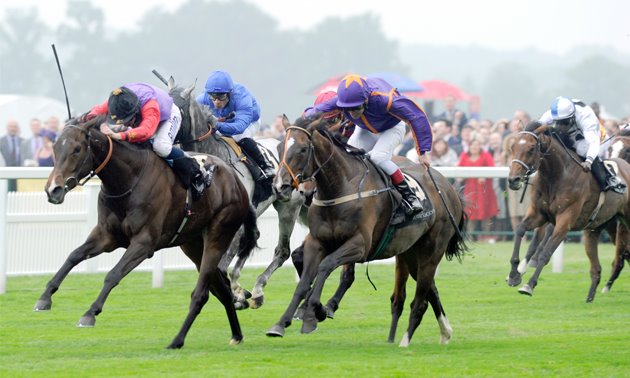There is a common misconception that handicapping involves little more than guessing which horse has “run to form” and basing the entire assessment of a race on that shaky premise.
Handicapping using “yardsticks” like this is questionable at the best of times, and is in many instances downright folly.
How, for instance, is a handicapper meant to rate a race in which there is little solid recent form to go on? How, for that matter, are they meant to rate a race in which there is no form at all?
This is the problem where a lot of two-year-old handicapping is concerned. But by applying a few tried-and-trusted techniques it can be seen to be a problem hardly at all.
One central tenet of handicapping in general and two-year-old handicapping in particular is that you should “rate horses on races, not races on horses.” In other words, especially when dealing with immature and lightly-raced horses, you should attempt to come up with an approximate figure for the race itself before moving on to collateral form.
There are several ways of doing this. Chief among them, at Timeform at least, is the process of race standardisation.
Race standardisation takes past runnings of the same or similar races, adjusts for race time, margins between horses, weight carried, size of field, and so on, and reapplies it to the race under consideration.
What the resulting figures tell us is the likely rating of the winner of today’s race based on historical precedent. More precisely, it tells us the range of ratings for the winner based on historical precedent. If the figures vary markedly it also tells us that historical precedent may not be the best guide, as the standard of the race is inconsistent from one year to the next.
This is just a starting point, though experience has shown that it is an uncannily accurate one a lot of the time. There are, of course, exceptions to historical precedent, and the handicapper needs to employ other methods to spot when this might be the case.
Included among these methods are other forms of standardisation based on the horses’ pedigrees and trainers. There is also the important matter of time to be considered.
The purpose of a horserace is for one horse to reach the finishing line ahead of another. In this respect the result – “form” as it were – is usually some sort of indicator of the respective merits of the runners on a given day under given conditions.
The horse which passed the post first has, by definition, also recorded the fastest time. But that is not the same thing as saying that recording the fastest possible time is the purpose of a race.
In truth, a horse’s timefigure may coincide with its ability (this will be more likely if a horse has raced on more than a few occasions) but often it will not. Many races are run at false paces – either too quickly or, more commonly, too slowly in the early stages – and the timefigure based on overall race time will suffer as a result.
A poor winning time won’t necessarily tell us that a horse is poor, but only a good horse will record a good winning time. Or, as Phil Bull, the founder of Timeform, once said: “a timefigure will tell you how bad a horse isn’t, but not necessarily how good a horse is.”
After all the form calculations have been made, a fast Timeform timefigure is an indication of a fast horse. Period. And in these instances time rather than form considerations are likely to hold sway.
Time and form are inextricably linked where horseracing analysis is concerned. In this respect Timeform does, as the saying goes, what it says on the tin.
After a ball-park figure, to whatever degree of certainty, has been applied to the race it is time to fine-tune it if necessary to take into account any past form lines. Today’s race may also make you look at a past race somewhat more or less favourably. Today’s race later becomes a past race itself, and so the process of continual “back-handicapping” develops.
Without rigorous back-handicapping the statistical processes involved in the various forms of standardisation would be in danger of becoming self-perpetuating, which is one reason why a Timeform handicap will be forever in a state of flux. It makes life altogether easier, of course, if you get it somewhere close to right in the first place!
All the above assumes that the result and the overall race time is all you have. That is not the case, of course. At Timeform there is a large team of experienced racereaders analysing races from video and from the course as well. The views of these individuals are crucial to the whole process of rating races and the individual horses that contest them.
As we all know, horses can experience bad luck in running, receive injudicious rides, be eased, and so much more, in a way that won’t be apparent from a crude reading of the result and time.
In many cases this can be reflected in a rating. Where the degree of interpretation involved means that any inference has to be somewhat vague, a symbol – such as a small “p” denoting the likelihood of improvement or a large “P” denoting the likelihood of considerable improvement – may well be attached to the rating instead.
Where the overall run of the race is concerned, assistance can also be provided by sectional timing, as explained separately on this site.
The above principles, and more besides, are applicable to all types of handicapping, though to varying degrees. They all go together to provide a detailed picture of what it is horses have achieved and what they may yet achieve.
And, so, it’s on to the next race: one down and several thousands still to go!






















.jpg)


 Url copied to clipboard.
Url copied to clipboard.

.jpg&w=300)
.jpg&w=300)
.jpg&w=300)
.jpg&w=300)
.jpg&w=300)
.jpg&w=300)




























